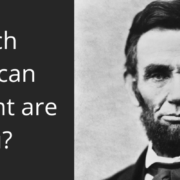Five Secrets to Doubling Your Workforce – Without Adding People or Tech
Five secrets to doubling your workforce
(without more people or gizmos)

Only about one-third of employees in the United States are engaged at work
Julie, we will call her, was so frustrated. She was in charge of a nonprofit that supported an important cause. She had talented people and enough budget to execute their programs. Despite all this, they just couldn’t seem to get anything done.
According to Gallup, only about one-third of employees in the United States are engaged at work. The other two-thirds are physically present but mentally absent.
Julie’s challenge was a bit different. Her employees were engaged but only about one-third of the time … and, of course, at different times. The other two-thirds seemed to be consumed in backbiting, frustration, and unproductive churn.
These 5 low-cost, high-impact efforts are changing all that.
- Take the time to explain WHY. Julie would get frustrated when her employees asked her to explain certain policies and decisions. She believed she was being second-guessed. After reflection, she recognized that most of her answers could be summed up with “because I said so.” She discovered that her reaction to the questions was part of the reason for the backbiting and friction.
According to Forbes, explaining WHY has a tendency to improve employee confidence, productivity, as well as the employee’s ability to problem solve and innovate.
A Change in mindset
Julie began using a different approach. She changed her mindset and began to interpret WHY questions as indicators that her employees cared. She took the opportunity to validate their concerns and explain her rationale. When she found that she could not offer a compelling answer, she worked together with the team to come up with a better policy.
- Take Responsibility. Julie prided herself on high standards. She set tough goals and challenged her team to meet them. When questioned by the board of directors about a shortfall, Julie often began the explanation with “the person responsible for X is working very hard, but …” She thought she was backing her team. They believed she was throwing them under the bus and blaming them. They never took risks or tried new approaches. Like others, her employees concluded that following the status quo was the safest way to avoid getting blamed and, perhaps, fired.
When Julie realized that her approach had these inadvertent negative effects, she changed her language to “That’s my responsibility. We’ll get to work on it.” She also made sure to distinguish between accountability and blame. She held her employees accountable for things under their control, like developing sound plans to achieve goals and then executing those efforts to standard. But she also made clear that no one was to blame for outcomes that were beyond their control. This reduced the finger-pointing that was wasting time and damaging morale.
- Hire for Culture. Every organization seeks the best possible talent and Julie was no different. She carefully outlined the skills for each position, diligently combed through candidate resumes for the right background and experiences, and conducted interviews to choose among the finalists. Normal practices.
Julie’s nonprofit had an average employee retention of 24 months. Every two years, most of her twenty-person team changed. Of those who left within two years, most were due to a culture mismatch — numbers consistent with national trends. With an average salary of $70,000 and an estimated turnover cost at 75% of annual salary, Julie was burning over $1 million in the revolving door.
Determine the ideal culture for your team
Julie used our tool to determine the ideal culture for her team. She discovered that a Collaborative team best addresses the nonprofit’s mission and challenges — one focused on teamwork and innovation. She had been hiring highly-qualified people who were individually competitive, which was undermining coordination. She was also hiring process-oriented people who wanted the comfort of executing routines rather than explore new ideas. Both were creating workplace friction and frustration.
Hiring for culture only works if you have clearly defined the values and expectations of your desired culture. Now, she can begin hiring the right people. Cutting turnover in half will save her nonprofit $500,000.
- Put people in roles that match their leader persona. Part of Julie’s turnover challenge was burnout — a common problem for nonprofits. Good people worked very hard, grew exhausted, and burned out. Their last six months on the job were marginally productive. Julie’s team was physically diverse, but most tended to think the same way.
Our leader-persona assessment led to some interesting observations. First, her team was imbalanced toward detail-orientation. This partly explained the innovation problems — she did not have Mavericks or Pioneers who were hard-wired to challenge the status quo. Her Operators and Reconcilers worked very hard to come up with new ideas, and some ideas were very good. But the work exhausted them, contributing to the high turnover for these positions.
Second, she had Jim, her only Maverick, working as the chief of staff, which meant he was trying to play the Reconciler role of building and managing consensus among the team. Jim was a super policy advocate, but he was terrible in this new role. Julie, an Operator, found herself constantly refereeing disputes among the team – something Jim was supposed to handle. She was tired of it. Jim was growing frustrated, too, and she did not want to lose him.
Julie put Jim back in the advocacy role. She is seeking more Mavericks or Pioneers to support her need for innovation and is hiring a Reconciler for the Chief of Staff position.
5. Involve your team in creating the annual business plan. Like most nonprofits, Julie had a 5-year strategic plan. She outsourced the work to a team of consultants. They listened carefully to Julie and the board about the challenges the nonprofit was facing and the main capabilities and initiatives to advance their cause. The consulting team produced a very well-organized strategic plan that was supposed to result in $2 million growth.
The problem was that no one other than the consultants really understood the theory of success, so everyone just kept doing what they had been doing. This was not going to yield better results. Her team was like the other 90 percent who failed to execute their strategies successfully.
Create a new strategy
Julie worked with us to create a simple new strategy to address the changes in the environment. She explained the updated approach to her team and how each of their efforts contributed. Using SLA’s implementation plan model, she had her teams develop their annual tasks and requirements. They were, in effect, aligning their own work plans for the year to the strategy. Dedicating three one-half days to this effort was painful.
But the payoff was immediate. There were no more unresourced, pie-in-the-sky ideas, disconnects between activities and desired outcomes, or competing silos. By outlining the needed resources and setting their own deadlines, the teams gained ownership and accountability for the execution.
Julie reckons that change alone boosted employee engagement from about one-third to about two-thirds.
These five new habits are helping Julie double employee engagement, effectively doubling her workforce’s productivity at very little cost.
Julie is an amalgamation of clients who have experienced these challenges and outcomes.


























